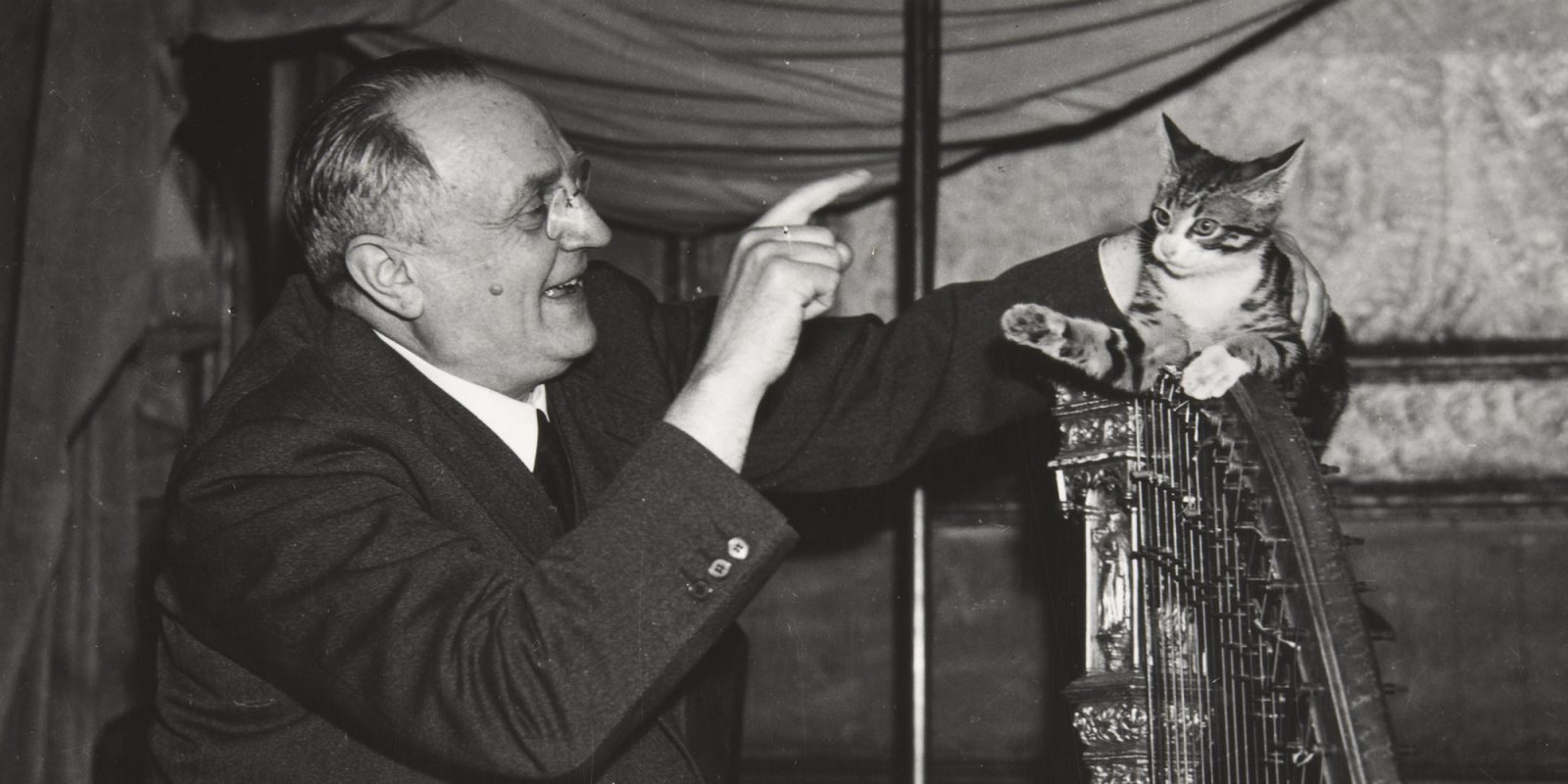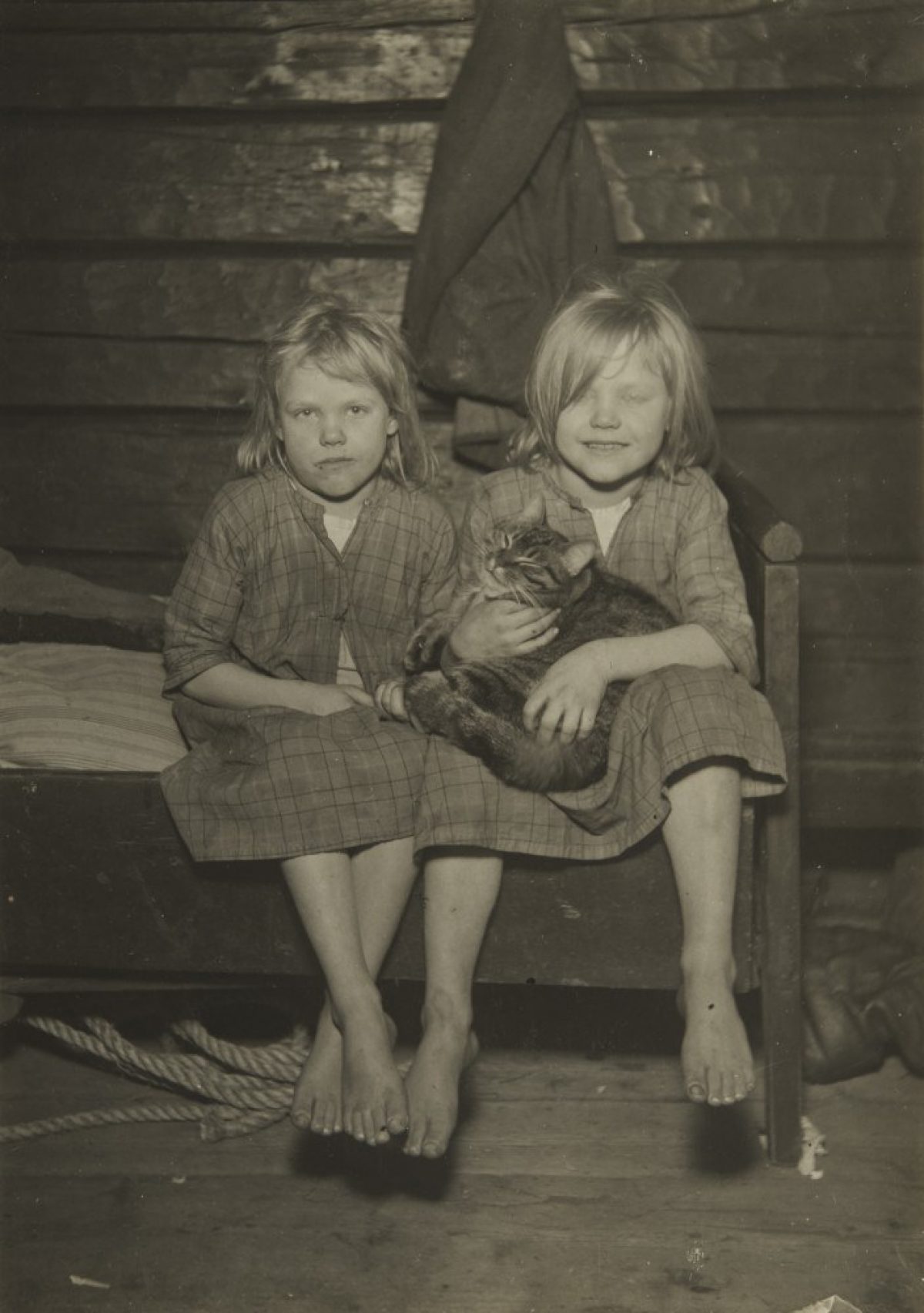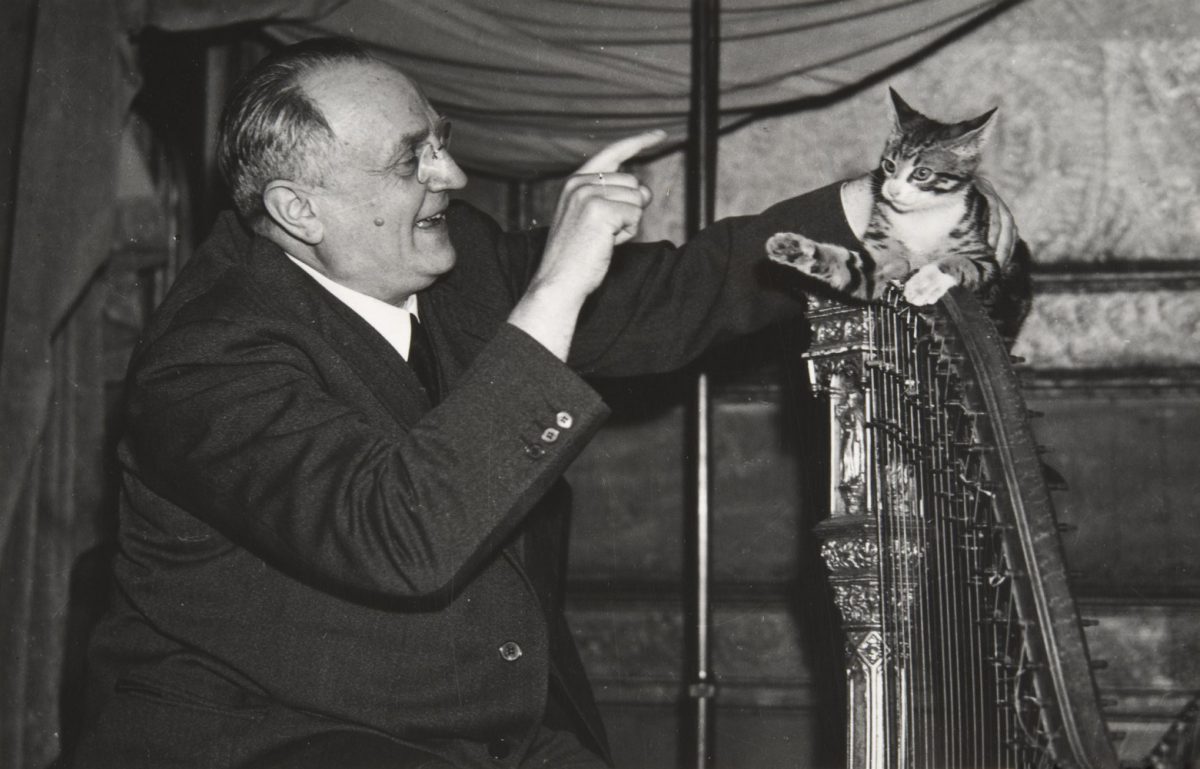
Cats as family members
A cat’s life from rural cabins to the bourgeois homes.
The cat was domesticated in the Middle East after agriculture was invented, about 10,000 years ago. The cat was a useful animal since it kept rodents away from granaries. Cats presumably arrived in Finland only towards the end of the Iron Age, 800–1000 CE.
In the Middle Ages, cats were used as fur animals. Cat skin was a material for purses, bags, lining for fur coats and fur hats. When the plague epidemic, the Black Death, broke out in Finland, masses of cats were killed. They were mistakenly blamed for having spread the plague. Cats have been seen as both the devil’s minions and animals radiating heavenly wisdom.
In the countryside, cats were associated with women and the home. The farmer’s wives and cats moved about the same area, around the cabin and cowshed. Even an old Finnish proverb says: “Who doesn’t feed a cat must feed mice.” As they caught rodents, cats were valued workers in farmhouses. In the early 20th century, the significance of mousers decreased as granaries were improved and chemical rat poisons were introduced. At this point, the cat became more of a pet, even in the countryside.
Old photos show how much people loved their cats. Whether the photo depicts the chimneyless cabin of a poor family or a refined bourgeois home, you may see a fine striped cat there. For the Finnish conductor and cellist Georg Schnéevoigt (1872–1947), a cat had a special significance. When asked about the secret of his success, he said he listened to the artistic counsel of his white angora cat Anatole: “When Anatole shook his head, you had to be careful. When he twitched his tail once, it was advisable to give up your plan. If Anatole pushed his head against you and gave you a lick, everything was fine.” This photo also shows Georg Schnéevoigt’s look of appreciation at his cat sitting on a harp.
Photographing moving subjects has always been a challenge. Arvi Hanstén writes in the photography journal Valokuvaus: valokuvauksellinen aikakauslehti, issue 7/1 July 1929: “Photographing dogs is much easier as they are less timid ... In contrast, photographing cats is much more difficult as they are so easily startled. One of our amateur photographers, who is also a ‘cat specialist,’ mentioned that the best moment to photograph a cat is when it has just woken up, as it will move slower and its eyes will be brighter. It is crucial that a cat’s eyes are captured correctly in a photo, since that makes the image lively. However, this is easier said than done.”
You can find photos of cats and other pets at www.finna.fi and www.museovirasto.finna.fi.
Text: Jaana Onatsu
Kamera 9/2021

Twin girls Tyyne and Aili and their cat Matti on the edge of a bed in a chimneyless cabin located in Jokilahti, Pielavesi, in the 1920s. Photo: Ahti Rytkönen / Picture Collections of the Finnish Heritage Agency

Conductor Georg Schnéevoigt and his cat in the 1930s. Photo: Picture Collections of the Finnish Heritage Agency